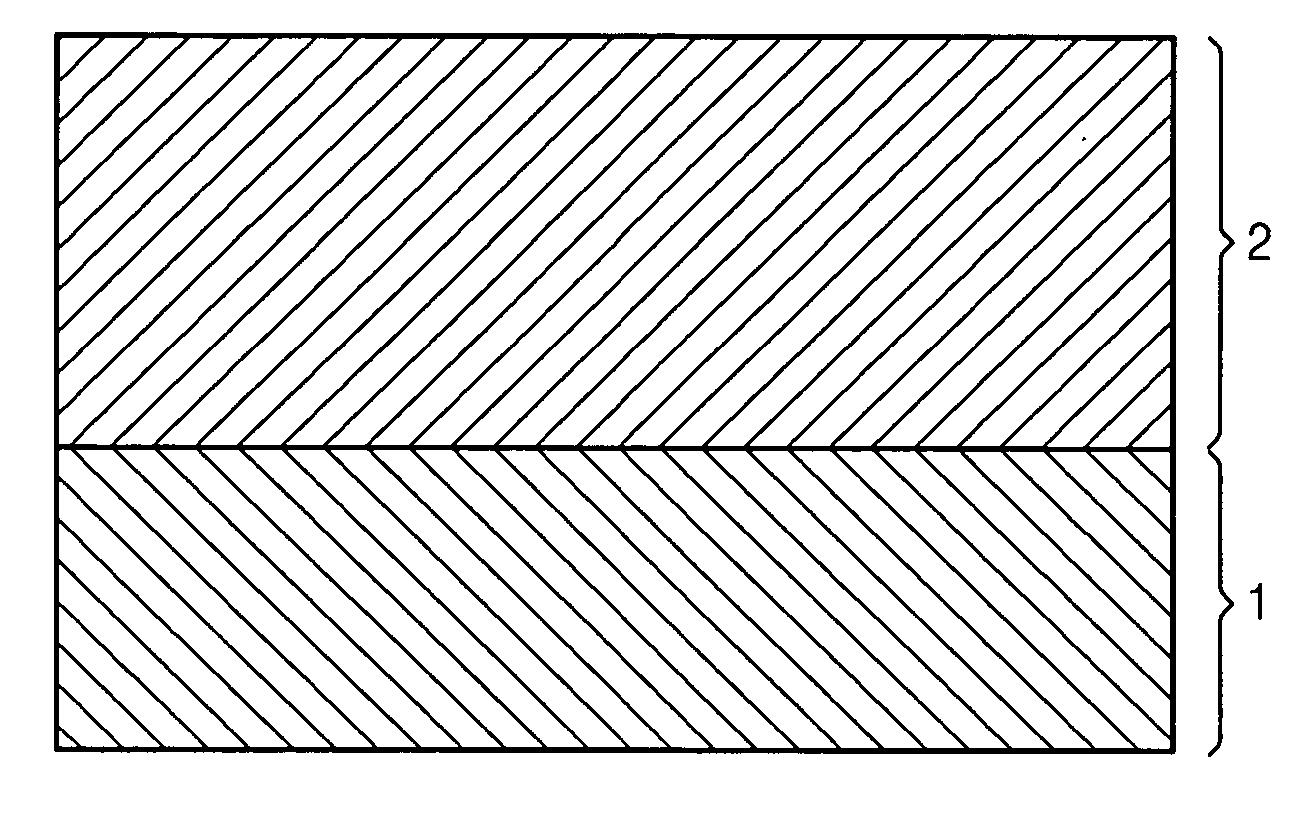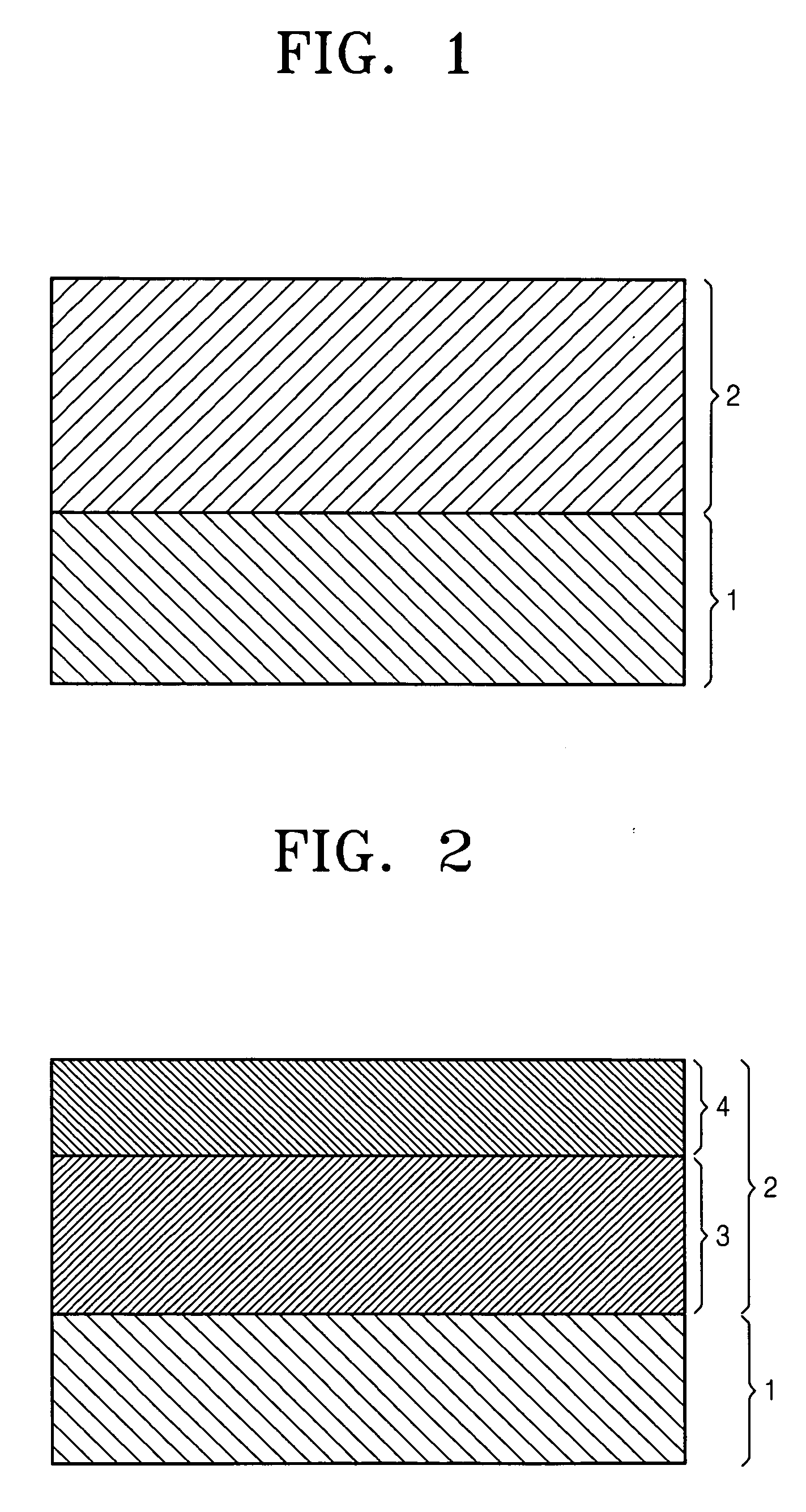Electrophotographic photoreceptor for blue-violet exposure light source and electrophotographic imaging apparatus employing the photoreceptor
a photoreceptor and exposure light technology, applied in the field of electrophotographic imaging apparatus employing the photoreceptor, can solve the problems of inpractical use, difficulty in obtaining clear spots, beam diameter, etc., and achieve the effect of effectively producing printed images with high resolution and significant reduction of radiating light spots
- Summary
- Abstract
- Description
- Claims
- Application Information
AI Technical Summary
Benefits of technology
Problems solved by technology
Method used
Image
Examples
example 1
[0057] 2 parts by weight of α-titanyl phthalocyanine and 2 parts by weight of polycarbonate Z resin (PANLITE TS-2020, Teijin Kasei Co.) were mixed with 46 parts by weight of chlorobenzene. The mixture was milled for an 1 hour using a sand mill to be finely dispersed.
[0058] parts by weight of arylamine-based compound (1), as a hole transporting material, 15 parts by weight of naphthalenetetracarboxylic acid diimide-based compound (2), as an electron transporting material, and 50 parts by weight of polycarbonate Z resin were dissolved in 300 parts by weight of chloroform.
[0059] The dispersion and the solution were mixed at a weight ratio of 1:8. The mixture was dispersed to be homogeneous using a homogenizer, thereby obtaining a coating slurry for forming the photosensitive layer. The coating slurry was applied on an anodized aluminum drum (anodic oxide layer thickness: 5 μm) having a diameter of 30 mm using a ring bar and then dried, thereby obtaining a monolayer type electrophoto...
example 2
[0060] A photoreceptor drum was manufactured using the same method of Example 1 except that the weight ratio of the dispersion and the solution was 1:4. The measured light transmittance at a wave length of 405 nm was 5.5×10−2.
example 3
[0061] 40 parts by weight of the arylamine-based compound (1) as a hole transporting material, 60 parts by weight of polycarbonate Z resin were dissolved in 300 parts by weight of chloroform, thereby obtaining a solution for forming the charge transporting layer. The solution was applied on an anodized aluminum drum (anodic oxide layer thickness: 5 μm) having a diameter of 30 mm using a ring bar, and then dried, thereby obtaining charge transporting layer having a thickness of about 8 μm.
[0062] The dispersion and the solution used in Example 1 were mixed at a weight ratio of 1:2, thereby obtaining a dispersion for forming the charge generating layer. Next, the dispersion was applied on the charge transporting layer using the ring bar, and then dried, thereby forming a charge generating layer having a thickness of about 7 μm.
[0063] The light transmittance of the obtained multilayer type electrophotographic photoreceptor drum at a wavelength of 405 nm was 8.9×10−2.
PUM
 Login to View More
Login to View More Abstract
Description
Claims
Application Information
 Login to View More
Login to View More - R&D
- Intellectual Property
- Life Sciences
- Materials
- Tech Scout
- Unparalleled Data Quality
- Higher Quality Content
- 60% Fewer Hallucinations
Browse by: Latest US Patents, China's latest patents, Technical Efficacy Thesaurus, Application Domain, Technology Topic, Popular Technical Reports.
© 2025 PatSnap. All rights reserved.Legal|Privacy policy|Modern Slavery Act Transparency Statement|Sitemap|About US| Contact US: help@patsnap.com



